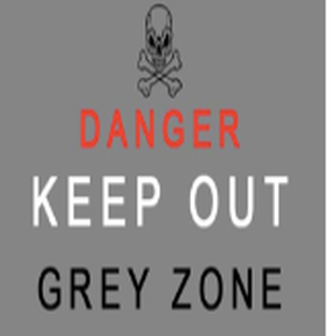Sounds obvious doesn’t it? But ask yourself … is everyone getting what they really want? Are economies booming, organizations growing, and unemployment shrinking? Are leaders, managers, teams, and individuals moving their organizations, other people, and themselves forward as well as they could? Have we all reached an overall ‘state of perfection’? Of course not.
The simple truth is that when anything … ANYTHING … is less than perfect it means that there is room for better performance. Think about your work and life experience. Everything that irritates, frustrates and angers you is generally the result of somebody’slack of performance. And since poor performance rarely occurs in isolation, we need to go beyond simply focusing only on an individual’s poor performance, and to also be aware of the possible contributing lack of performance of their direct (and indirect) managers, their teammates, the person who hired them, and whomever trained them. When the surrounding people do not hold the poor performer accountable, nor are they themselves held accountable for their contributing role, we cannot expect anyone’s performance to change for the better. Performance results will only increase when we first acknowledge that we can do better. We need to ask ourselves whether we are truly achieving the levels of performance that we are capable of – or whether we are just accepting and justifying the performance levels that we are experiencing. Too often less than expected performance results are rationalized, excuses are made, and substandard performance is permitted to continue. But by first acknowledging that we are capable of performing better, we can then proceed to understand the inter-relatedness of current performance results and to identify the root causes of any performance issues. If you are not experiencing the results that you want – you have a performance issue. At the outset, it is essential to fully define what we want to experience and then what performance results will make that happen. Then we need to honestly assess and evaluate our current performance capability. Doing this will enable us to identify what we need to change in order to achieve our desired performance outcomes. Here is where a lot of people fall short. When they fail to set realistic performance objectives, that will be achieved within realistic time frames, they set themselves and others up for failure. A big part of the CAES capability assessment process involves ensuring that a person, at any level in the organizational hierarchy, has the cognitive capability to handle the complexity of information, and solve problems, that are specific to their role in order to perform effectively. If they don’t have the cognitive capability required they will simply not perform. Similarly, it is essential that the people who are defining desired performance objectives have the appropriate cognitive capability that will enable them to determine what these objectives should realistically be, and the skills and capabilities that are required to achieve them. If they cannot effectively define desired performance, and what is required to bring it about, their performance objectives are unlikely to be met. Assuming that desired performance results have been properly defined for ourselves and for others, we then need to stop justifying and accepting performance that is less than these desired performance expectations. We will only see significant progress when the ‘evaluators’ of performance do not settle for anything less than the achievement of identified goals. There should be no acceptable ‘grey zone’ found between desired performance and actual performance – either the desired results were achieved or they weren’t. If you justify and accept sub-standard performance you will be passed by better performers. Top performing organizations, leaders, and individuals never believe that they have achieved perfection – they always want to learn, grow, develop and see even better results. While satisfied with their accomplishments, they ALWAYS think that they can perform better. This forward-thinking motivational foundation is the reason why they are top performers in the first place, and is why they are always a step ahead of their competitors who struggle to ‘keep up’. Unaccountable people, who justify substandard performance results, will subsequently fail to commit to ongoing performance capability development and performance enhancement initiatives. As a result, their short-term perspective makes them vulnerable to their longer-term thinking, growth-oriented competitors. In the end, those who justify their less-than-desired performance rarely get what they really want – they end up having to settle for what they get. While top performers experience more successful, challenging and satisfying careers, the benefit of committing to increased performance results will be experienced at multiple levels. For example:
The list can be long, but you get my point. So how do we get there from here? Perhaps I can suggest a basic performance success formula: 1) Identify the overall final experience (result) 2) Set realistic yet challenging performance objectives (desired performance) 3) Assess current technical and non-technical performance capabilities (actual performance) 4) Take steps that reduce the gaps found between desired and the actual performance 5) Evaluate the effectiveness of any gap reduction, performance enhancement initiatives 6) 7) LEARN from the evaluation 8) When performance gaps remain, change your approach and develop additional relevant performance capabilities 9) Continue to pursue the original performance objectives 10) Repeat until the objectives are achieved I think that this is a pretty straightforward success formula. But I have purposely left out one key component. You will notice that I have left open section 6) within which I would, under certain circumstances, insert – Replace poor performers. Please don’t misunderstand, just because we miss performance targets does not necessarily mean that the people involved, or the processes, need to be immediately replaced. Suitably challenging performance objectives can be difficult to achieve, and we will often fall short of desired performance results. But when a continual improvement mentality becomes secondary to a ‘justify and accept’ mentality, desired performance objectives will NEVER be met. So, as soon as people, at whatever organization level or role (CEO’s right down to front-line staff), stop moving forward, start making excuses, justify substandard performance and become comfortable being in the ‘grey zone’ – REPLACE THEM! Their lack of commitment to continuous improvement will result in not only their never meeting their desired performance objectives, they will inhibit the ability of the people around them to do so as well. As you know it is difficult to meet challenging performance objectives with increasingly fewer available resources. So it is just as critical to work with performance-oriented people, either current top performers or people with high performance potential, as it is to continually develop your own personal performance capabilities. Consider surrounding yourself with individuals, managers and leaders who are committed to higher levels of performance, who have a continual improvement mentality, who commit to ongoing learning, and who are proactive toward change. Since these are the people who will help you to achieve performance success, I would suggest that you support, develop and retain them. And replace the others - because you cannot afford their keeping you in the ‘Performance Grey Zone’.
0 Comments
Leave a Reply. |
AuthorJim Gilchrist B.E.S. Archives
June 2024
|
|
Home
About CAES About Us Our History Our Team Career Services Career Services Career Development Program Organizational Services Organizational Services CAES Assessments CAES Program Assessments Cognitive Complexity Assessment Articles & Videos Select Articles Videos Contact CAES Copyright |
Site powered by Weebly. Managed by Rebel.ca


 RSS Feed
RSS Feed
